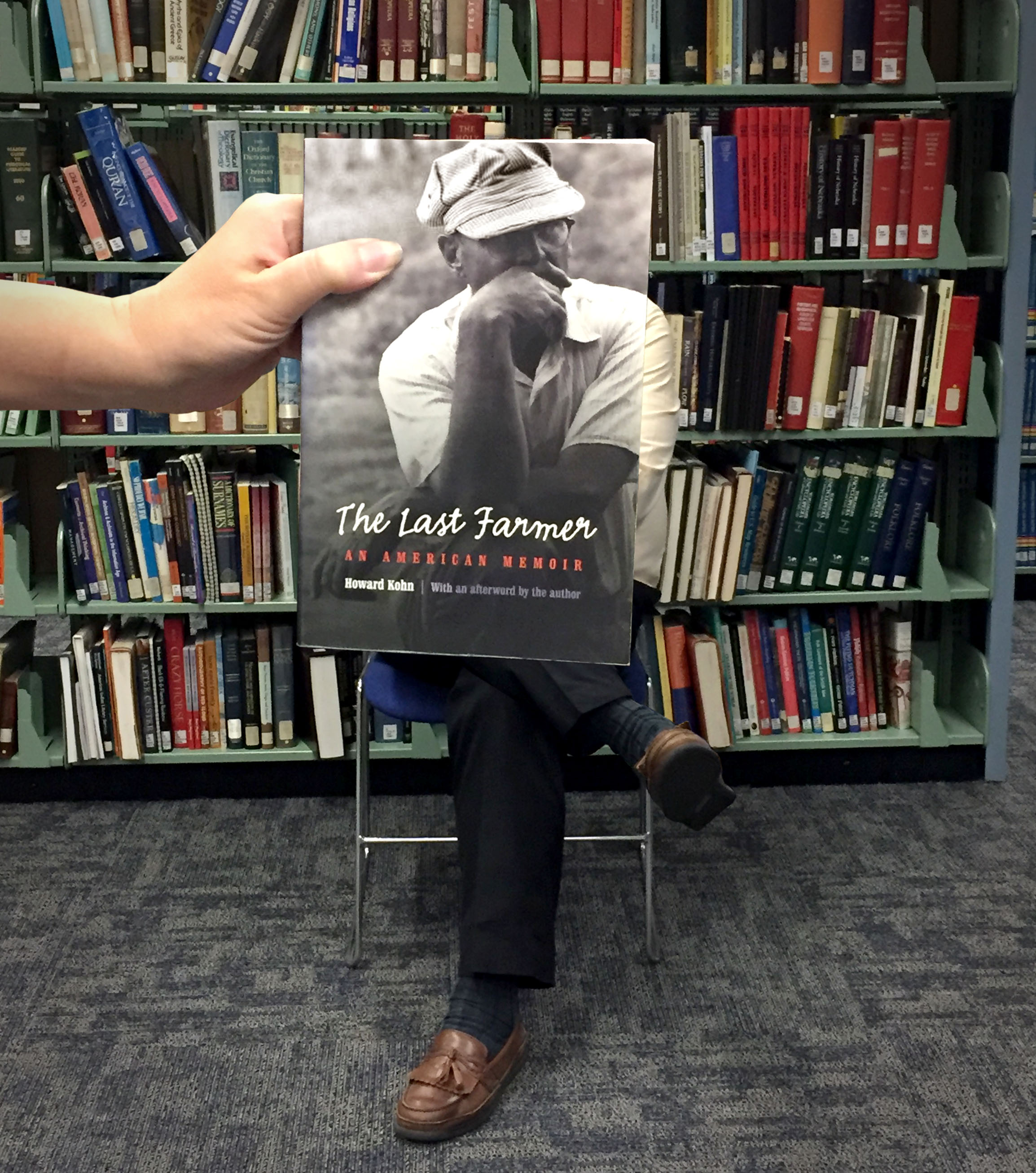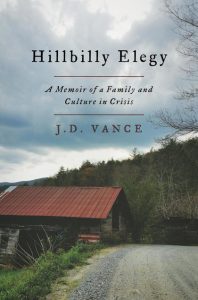Search the Blog
Categories
- Books & Reading
- Broadband Buzz
- Census
- Education & Training
- General
- Grants
- Information Resources
- Library Management
- Nebraska Center for the Book
- Nebraska Memories
- Now hiring @ your library
- Preservation
- Pretty Sweet Tech
- Programming
- Public Library Boards of Trustees
- Public Relations
- Talking Book & Braille Service (TBBS)
- Technology
- Uncategorized
- What's Up Doc / Govdocs
- Youth Services
Archives
Subscribe
Search Results for: great american read
Friday Reads: Cookbooks
It’s time for more cookbooks!
I couldn’t decide which one I wanted to share, so I thought I would include a few favorites from my last cookbook haul:
Perfectly Golden: Inspired Recipes from Goldenrod Pastries, the Nebraska Bakery that Specializes in Gluten-Free, Dairy-Free, and Vegan Treats by Angela Garbacz
Goldenrod Pastries, located in Lincoln, is an amazing bakery with the best baked goods of all kinds. As much as I would love to just visit every day, having the cookbook now helps fill the gaps.
Gluten-free and vegan baking can be intimidating, but the recipes are clear and easy enough, even for beginning bakers. The photos are all bright and cheerful, and there are plenty of notes to help explain different parts of the recipes, like flours.
I started with the cinnamon rolls which turned out perfectly and may very well replace my usual recipe!
Aran: Recipes and Stories from a Bakery in the Heart of Scotland by Flora Shedden
One of the best parts of reading cookbooks, especially this last year, is looking at amazing pictures and reading stories of far-off places, and turning your kitchen into something like a small Scottish bakery. Flora Shedden’s (from the Great British Bake Off) book has become a favorite. Aran (meaning bread) is full of recipes arranged by the time of day in the bakery, starting with making bread before dawn, including a section for getting your sourdough starters just right. The recipes are simple and encouraging, with plenty of instructions for North American conversions. Some recipes, like croissants, are multi-day projects but well worth the extra time and effort (with lots of butter).
And now for something completely different!
Fuel Your Body: How to Cook and Eat for Peak Performance: 77 Simple, Nutritious, Whole-Food Recipes for Every Athlete by Angie Asche
This is already my new favorite everyday cookbook. The recipes are super simple and delicious, focusing on helping you reach your full athletic potential whether you’re just trying to get healthy, you’re a recreational runner, or a more serious athlete. The first section includes great information for athletes (or parents of athletes) on basic nutrition concepts and timing your meals around game time to give you the best boost, as well as several weekly meal plans (including a vegan/plant-based plan) and how to make the perfect smoothie. These recipes are quick and easy, perfect for weekly meals. The baked banana oatmeal has been great for breakfast meal prep through the week. The lentil tacos, almond flour cookies, and ginger-citrus smoothie are also new staples.
What’s Sally Reading?

ALA Upcoming Youth Awards and Newly Announced Lists
The American Library Association (ALA) will announce the Youth Media Awards (think Caldecott, Newbery, Coretta Scott King Awards and more) starting at 8 am CT next Monday, January 25. For the first time that I am aware of, they also have released several annual booklists early. They are:
Great Graphic Novels for Teens
Quick Picks for Reluctant Young Adult Readers
Amazing Audiobooks for Young Adults
Check these lists out to see what you may already have in your collection.
One of the Top Ten titles for the “Quick Picks for Reluctant Young Adult Readers” Continue reading
Posted in Books & Reading, General, Youth Services
Leave a comment
Friday Reads: Break Shot: My First 21 Years by James Taylor
More accurately described – Friday listens, this title is available exclusively from Audible.com. Break Shot was recorded by James in his home studio, TheBarn in western Massachusetts and released in conjunction with his 19th studio album, American Standard. At only an hour and a half, I listened twice, enjoying it even more the second time. It begins with the following: “I’m James Taylor and I’m a professional autobiographer. I usually talk about myself with a guitar in my hand and I have one now.” James explains that the title is an analogy for his tight knit family that eventually split apart “like a break shot in the game of pool … when you slam the cue ball into the fifteen other balls and they all go flying off.” James and his four siblings were raised with great privilege in North Carolina in the ‘60’s but the family fell apart. Three of the kids ended up in psychiatric hospitals. Drug and alcohol addiction took their toll.
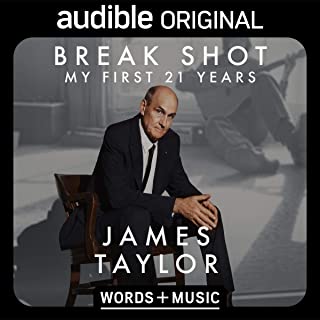
Despite coming from a family of doctors and lawyers, James wasn’t interested in college. His parents supported his decision to spend tuition money on a flight to London. This trip provided the pivotal moment of his life. Through life-long friend Danny Kortchmar, James met with Peter Asher, the head of A&R (Artist & Repertoire) at Apple Records and played his demo tape. Peter liked what he heard and recalls calling out, “is there a Beatle in the house?” James auditioned for Paul McCartney and George Harrison with the song Something in the Way She Moves. James’ first album James Taylor, was the first recording by a non-British artist released by Apple Records in 1968.
Break Shot didn’t provide a great deal of revelatory information, so much of James’ life is in his lyrics, but the storytelling intertwined with the recorded songs provided an experience you can’t have with a printed book. This audio memoir was for me, a private concert. This recording is part of a new series, Words+Music, Audible’s musical storytelling initiative. With other exclusive music biographies by Tom Morello, Common, St. Vincent, Sheryl Crow, and T Bone Burnett, I hope other audio publishers will begin providing similar recordings.
Friday Reads: Sigh, Gone: A Misfit’s Memoir of Great Books, Punk Rock, and the Fight to Fit In, by Phuc Tran
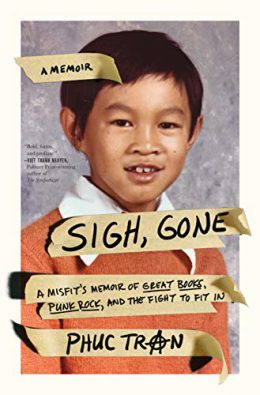
I love memoirs. Not only do they offer readers insight into what it’s like to live lives different from their own, they also remind us of how much we humans have in common. That’s definitely the case with Sigh, Gone: A Misfit’s Memoir of Great Books, Punk Rock, and the Fight to Fit In, by Vietnamese American teacher, writer, and tattoo artist Phuc Tran.
In 1975, when Tran was one, his family fled the fall of Saigon and wound up resettled in Carlisle, Pennsylvania. In Sigh Gone, Tran describes what it was like growing up as a member of “the token refugee family” (2) in town. As one can imagine, it included schoolyard taunts and name-calling, and, when out in public with his family, the discomfort of always sticking out.
Tran also describes the resentment he felt toward his parents over what he saw, at the time, as their cultural and English language failings: “I needed to trust in my dad’s ability to navigate the world at large, and I was already doubting him. . . . Five-year-olds were supposed to believe what their parents said. Maybe some kids’ parents still had the golden nimbus of infallibility, but not my parents and not for me” (16).
Going forward, Tran chronicles his relentless efforts to assimilate. By high school, his two-pronged strategy included pursuit of academic excellence and successful integration into the punk/skater subculture. Of the later, he writes, “[b]eing a freak because of my weird clothes and hair was a respite. These were things that I had chosen . . . Fighting rednecks because you were a punk was far better than fighting because you were Asian, and fighting with allies was far better than fighting alone” (6).
So why did this book resonate with me? For one, Tran’s depiction of high school, with its cliques and angst—a “cultural cul-de-sac built with the craftsman blueprint of John Hughes, the Frank Lloyd Wright of teen malaise” (2)—is viscerally familiar. His description of his job as a library page also warmed my librarian’s heart, as did his discovery and adoption of Clifton Fadiman’s The Lifetime Reading Plan, which he stumbled on while prepping for the library’s used book sale.
Though the Plan, was “unapologetically American, classist, and white” (4), Tran could not have cared less at the time; it served as a catalyst for his burgeoning love of literature–which the English major in me appreciated. He also viewed the Plan as his entrée to the world of big ideas that can connect people across time, geography, and culture—which is what Tran, himself, has accomplished with this memoir. Sigh, Gone concludes right after Tran graduates from high school, just as he’s poised to head off to Bard College, which had described itself to him in its admissions literature as “A Place to Think” (267). So fitting!
#BookFace & Friday Reads: “Lovely War” by Julie Berry
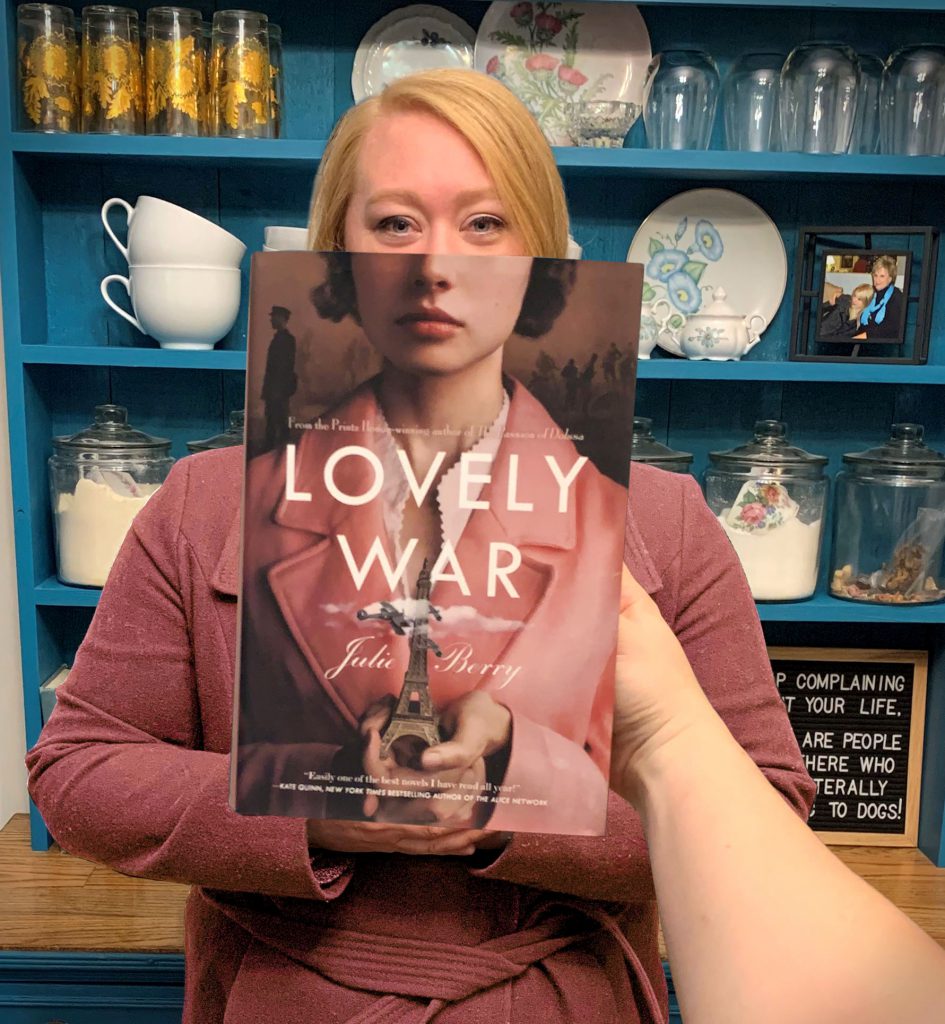
I first picked up this book because I was drawn to the cover art and soft, muted color scheme, but also because I’m a sucker for historical fiction. I expected a straight forward period romance, boy meets girl, boy goes to war, there’s pining, an injury, and a happily ever after. Don’t get me wrong, there is some of the expected, but let’s just say I was pleasantly surprised by this novel’s unexpected plot and characters.
It all starts with a torrid affair between gods, Aphrodite and Ares to be exact. Then turns into two love stories the goddess orchestrated during the last World War. The author introduces us to interesting characters from different walks of life, weaving their stories together for the reader. Berry dives in to overlooked parts of World War I history like the roles of black American soldiers, James Reese Europe’s introduction of Jazz to France, and YMCA volunteer work to name a few. I really appreciated the appendix and bibliography included at the end of the book. They let the reader know which parts of the story are factual and expand on those issues. Berry also includes references to nonfiction works that she used, so the reader can keep learning.
This title comes from our large collection of children’s and young adult books sent to us as review copies from book publishers. When our Children and Young Adult Library Services Coordinator, Sally Snyder, is done with them, the review copies are available for the Library System Directors to distribute to school and public libraries in their systems. Public and school library staff are also welcome to stop by and select some titles for their library collections. We think this one would be a great addition to any library. Contact Sally Snyder for more information.
Love this #BookFace & reading? We suggest checking out all the titles available in our Book Club collection, permanent collection, and Nebraska OverDrive Libraries. Check out our past #BookFaceFriday photos on the Nebraska Library Commission’s Facebook page!
Berry, Julie. Lovely War. Viking Books for Young Readers, 2019.
Posted in Books & Reading, General, Youth Services
Tagged Book Covers, bookfacefriday, books, Friday Reads, Julie Berry, Lovely War, Reading, YA
Leave a comment
What’s Sally Reading?

YALSA Announces the 2020 Quick Picks for Reluctant Young Adult Readers List
YALSA (Young Adult Library Services Association), a division of the American Library Association (ALA), announced the list on January 8, 2020 on their blog, The Hub. You will see the committee also chose a “top ten” out of the 64 titles on the final list.
One of the titles selected as a top ten of the list is the graphic novel Pumpkinheads by Rainbow Rowell, a Nebraska author. 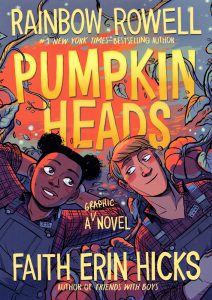 Deja and Josiah (who goes by Josie) are great friends and have worked together each fall at the pumpkin patch. This is the last day of their last fall together. Deja is determined to get Josie to talk to his four-year crush – the Fudge Girl. He is reluctant. This final evening is a whirlwind of hitting different parts of the Patch trying to find his crush. They encounter a snack-thief, a runaway goat, the maze, lots of chances to eat, all as Josie suffers anxiety about actually talking to Fudge Girl. As School Library Journal (8/1/19) says, “The characters in this graphic novel are so expressive and authentic, it’s impossible not to love them…the dialog is cute, funny, and punny…”
Deja and Josiah (who goes by Josie) are great friends and have worked together each fall at the pumpkin patch. This is the last day of their last fall together. Deja is determined to get Josie to talk to his four-year crush – the Fudge Girl. He is reluctant. This final evening is a whirlwind of hitting different parts of the Patch trying to find his crush. They encounter a snack-thief, a runaway goat, the maze, lots of chances to eat, all as Josie suffers anxiety about actually talking to Fudge Girl. As School Library Journal (8/1/19) says, “The characters in this graphic novel are so expressive and authentic, it’s impossible not to love them…the dialog is cute, funny, and punny…”
Ms. Rowell notes in the back of the book that the Pumpkin Patch in the novel is fictional. However, illustrator Faith Erin Hicks did travel to Omaha to join Rainbow Rowell in a visit to her favorite Omaha pumpkin patch. There is a fun conversation between them at the back of the book.
(The Nebraska Library Commission receives free copies of children’s and young adult books for review from a number of publishers. After review, the books are distributed free, via the Regional Library Systems, to Nebraska school and public libraries.)
Posted in Books & Reading, General, Youth Services
Leave a comment
Pretty Sweet Tech: Libraries Ready to Code
 Coding is no secret. In fact, there’s an almost paralyzing amount of information available to people. So much that it can be difficult to decide where to start and where to go next. Knowledge of computers and technology is rapidly becoming vital to life, but many people don’t have a computer science or technology background. And that’s okay.
Coding is no secret. In fact, there’s an almost paralyzing amount of information available to people. So much that it can be difficult to decide where to start and where to go next. Knowledge of computers and technology is rapidly becoming vital to life, but many people don’t have a computer science or technology background. And that’s okay.
In 2017, the American Library Association (ALA) and Google saw this and partnered together to make Libraries Ready to Code. Librarians and educators from 30 different libraries worked on their own project to decide what “coding” means to them and how to best introduce it to their own communities. The result is s set of tools that has been made freely available to us all.
This resource is geared towards all experience levels, so you can filter resources by experience level: “I’m Getting Started”, “I’ve Had Some Practice”, and “I’m Experienced”. Some of these resources are further divided into subject categories like art and fashion, while others are parceled out by recommended age range. Either way, this resource is a great place to connect K-12 students with computational thinking and “coding” skills.
 But keep in mind that this is just a drop in the bucket of what is available. Not everyone learns the same way either. Feel free to look to these learning tools as inspiration to build your own. Think of Libraries Ready to Code as a starting point on the long road towards future-ready technology.
But keep in mind that this is just a drop in the bucket of what is available. Not everyone learns the same way either. Feel free to look to these learning tools as inspiration to build your own. Think of Libraries Ready to Code as a starting point on the long road towards future-ready technology.
Keep an eye out for students who devour every resource on this list, then ask for more. Ask them what they want to learn, then do a little digging to find out which resources you need to make it happen. You might not know every line of code that makes a product work, but you can connect interested students with the information they need to learn.
At one time, information took the form of books and journal articles. Now that information may appear in a Raspberry Pi or YouTube video. It’s time to curate our ever-changing resources. But do yourself a favor and don’t try to learn every bit of technology on the planet. You would be in for a world of hurt.
Start asking students to teach as they learn. There is no telling what people are capable of when given the tools to learn. Take a look at this Virtual Reality headset and software built by a group of high school students in France. Their passion was to make technology accessible to all income levels. They learned more thoroughly with the intent to teach. Virtual Reality, Augmented Reality, machine learning and more are all at our fingertips.
Technology is not slowing down, and neither are libraries. We can work together to curate resources and pave the way towards a better future.
Posted in General, Pretty Sweet Tech, Technology, Uncategorized
Tagged coding, Pretty Sweet Tech, technology
Leave a comment
#BookFaceFriday “The Last Farmer: An American Memoir”
Old McDonald has nothing on this week’s #BookFaceFriday!
“The Last Farmer: An American Memoir” by Howard Kohn (Bison Books, 2004) is a great read, even if you’re just a farm kid at heart. This memoir is based on Howard Kohn’s father, his last few seasons working the farm that they both were raised on. Kohn, a former editor at Rolling Stone, digs into the gritty details of his father’s story and the only way of life he ever knew. As part of our permanent collection it’s available for check out to anyone. Just ask our amazing Information Services staff! This title is published by the Bison Books, and imprint of University of Nebraska Press, which we collect from for our state document program.
“A stunning portrait. . . . Kohn went looking for one story—his father’s—only to find his own.”—Chicago Tribune
This week’s #BookFace model is Three Rivers Library System Director, Eric Jones!!
Love this #BookFace & reading? We suggest checking out all the titles available for book clubs at http://nlc.nebraska.gov/ref/bookclub. Check out our past #BookFaceFriday photos on the Nebraska Library Commission’s Facebook page!
Friday Reads: Canada by Mike Myers
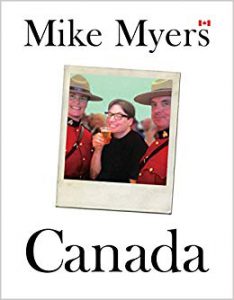 Canada by Mike Myers
Canada by Mike Myers
Publisher: Doubleday Canada (October 22, 2016)
This title came to my attention on July 1st aka Canada Day as the daily special from Audible. I was intrigued, downloaded the title, and eagerly began listening. It helps that the author of whom I have long been a fan reads this title.
Myers begins with the premise that Canada lacks a mission statement. The country promises to provide good government and a safe place to live but is that enough? The inevitable comparisons to life in the United States make up a great deal of content. He compares regional colloquialisms, health care, the love of hockey, and the government supported CBC to their American counterparts. The United States does not propagate information about Canada so there may be many episodes in Canadian history that will be new information. To drive this point home, when my curiosity was piqued for the Prime Minister Pierre Trudeau, father of the current Prime Minister Justin Trudeau, I looked for books to read more about him from my local library, but there were none.
Mike Myers was born to two Liverpudlian parents who immigrated to Canada for better employment opportunities. English parents making a life in Canada caused a clash of culture. Mike shares how the values of his parents and the humor of his brothers Peter and Paul shaped his worldview and brand of comedy. One of the attributes of his father in often-difficult situations was a non-rhetorical question of “how can we make this funny?”
Mike shares how his character Wayne Campbell (Wayne’s World) is a quintessential Canadian creation, specifically from the Scarborough district of Montreal, dissecting everything from his language to his name. Other Saturday Night Live characters also owe their origin to Mike’s Canadian and British upbringing. With Canadian, British, and United States Citizenship, it’s clear that Mike Myers is a very proud Canadian patriot despite being an expatriate.
Myers, Mike (2016) Canada. Doubleday Canada
Friday Reads: Little Fires Everywhere, by Celeste Ng
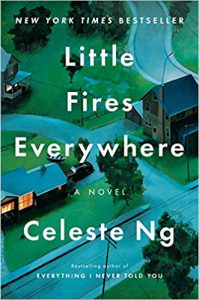 I heard Celeste Ng speak at a United for Libraries hosted author event a few years ago. At the same event, I received an advance copy of her book, Little Fires Everywhere. I enjoyed her remarks but I wasn’t especially interested in reading the book. The book has received a lot of attention since its publication. It is included on many best books of 2017 lists and it is now among three books on Lincoln City Libraries short list for One Book One Lincoln voting. During a recent and long road trip, I had a chance to listen to the audio version of Ng’s book. I wasn’t disappointed.
I heard Celeste Ng speak at a United for Libraries hosted author event a few years ago. At the same event, I received an advance copy of her book, Little Fires Everywhere. I enjoyed her remarks but I wasn’t especially interested in reading the book. The book has received a lot of attention since its publication. It is included on many best books of 2017 lists and it is now among three books on Lincoln City Libraries short list for One Book One Lincoln voting. During a recent and long road trip, I had a chance to listen to the audio version of Ng’s book. I wasn’t disappointed.
Little Fires Everywhere begins with a house on fire and speculation about who is to blame. At the top of the list is the youngest family member – a non-conforming teen rebel. But did she do it and, if so, why? The setting is Shaker Heights, Ohio, and the story evolves from the developing relationships among members of two families – one long rooted in the community and prosperous, and the other (a mother and daughter) impoverished and living day to day under uncertain circumstances. Central are the two mothers – Elena Richardson, a local news reporter, mother of four and a well-connected community member, and Mia Warren, a mysterious artist and single mother of one. Connections evolve and conflict emerges as a result of the attempted adoption of a Chinese-American baby and an ensuing custody battle. In the background is Elena Richardson’s effort to uncover Mia Warren’s true identity.
Lincoln’s three books selected for the all community read are all excellent choices. Celeste Ng’s book is worthy and notable. If chosen, it will make an interesting read and a great source for conversation.
Little Fires Everywhere is Celeste Ng’s second novel. Her debut book is, Everything I Never Told You, an award winning best seller.
Ng, Celeste. Little fires everywhere. (New York: Penguin Press) 2017.
Friday Reads: “Bless Me, Ultima” by Rudolfo Anaya
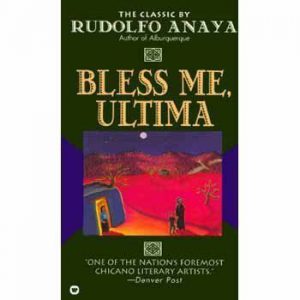 I became motivated to reread this book when I looked at the booklist for The Great American Read program and realized that it had been about forty years since I first encountered this classic “Coming of Age” story.
I became motivated to reread this book when I looked at the booklist for The Great American Read program and realized that it had been about forty years since I first encountered this classic “Coming of Age” story.
With Bless Me, Ultima (1972), the first in a trilogy (followed by the publication of Heart of Aztlan in 1976 and Tortuga in 1979), Anaya follows six-year-old Antonio on his growing-up journey and spins the story by revealing dreams and reality—and blurring the fine line between them from time to time. Anaya says he does not seek characters—they just come to him. So it is with Ultima. Anaya says she appeared in the doorway while he was writing and assured him that the story will not work unless he put her in it. Ultima is a pivotal character in the story. She is a curandera—a healer and teacher, and she guides Antonio gently without prescribing exact choices to make or solutions to problems.
From the first dream sequence to the last (you’ll recognize them, they are in italics), it is clear that Antonio was born to struggle and that his path is marked by having his feet in two different worlds. Throughout the book, he is faced with tests. Some are common tests of childhood, like how to overcome the loneliness of feeling different. Others are extremely unusual and painful tests for a young person to endure and learn from. I feel like this book has resonated with so many readers because even though we may live in different worlds, many of us can really relate to his experience. Are we all on the same journey as Antonio? Struggling to understand good and evil around (and within) us? But are some of us especially lost with no guides or curanderas to show us the way?
The setting and characters ring true to me. The book mirrors my experience in small towns in New Mexico right down to my best friend Lenora’s grandmother—who might very well be the model for Antonio’s mother—speaking only Spanish, warning us against straying to the city (too late—we were already on our way to LA), and feeding us the most heavenly comfort food for breakfast, lunch, and dinner.
The story is told in flat-out beautiful writing, and unless you read the book, you’ll just have to take my word for it that this book has one of the best first paragraphs ever! So I’d suggest you (and your book group) find out for yourselves. This #FridayReads feature is available as a Book Club kit from the Nebraska Library Commission at http://nlc.nebraska.gov/ref/bookclub.
The Great American Read is an eight-part PBS series that explores and celebrates the power of reading, in the context of America’s 100 best-loved novels (as chosen through a national survey). It investigates how and why writers create their fictional worlds, how we as readers are affected by these stories, and what these 100 different books have to say about our diverse nation and our shared human experience. Voting for America’s favorite book opened with the launch of the two-hour premiere episode on May 22 and continues throughout the summer, leading up to the grand finale “favorite” announcement in October 2018. Viewers can vote at pbs.org/greatamericanread and through hashtag voting via Facebook and Twitter using #GreatReadPBS. I think I might be voting for Bless Me Ultima. Which book will you vote for?
Review by Mary Jo Ryan.
#fridayreads
#GreatReadPBS
Friday Reads: Lawn Boy by Jonathan Evison
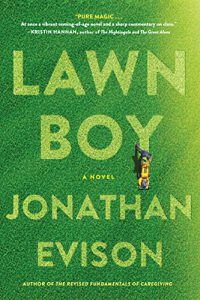 All 5-year-old Mike wanted from life was to go to Disney World. One day, his dad packed him in the car, drove him to an abandoned shipyard, and told him that The Happiest Place on Earth must have closed. That was the day that ol’ Mike Muñoz realizes that life will be a constant disappointment, and just when you think you’re going to get what you want, it will all be taken away.
All 5-year-old Mike wanted from life was to go to Disney World. One day, his dad packed him in the car, drove him to an abandoned shipyard, and told him that The Happiest Place on Earth must have closed. That was the day that ol’ Mike Muñoz realizes that life will be a constant disappointment, and just when you think you’re going to get what you want, it will all be taken away.
Today, Mike is a 22-year-old landscaper (although he prefers the title “topiary artist” for his skills with the hedge-trimmers). He still lives with his mom and his developmentally disabled brother, their dad long gone to parts unknown. He drives a junky car, always one step away from engine failure, and still hangs out with his high school buddy, neither of them with any romantic prospects on the horizon.
When Mike loses his landscaping job for refusing to pick up dog poo, he is determined to do whatever it takes to break free of his hand-to-mouth existence and chase the American Dream, perhaps writing “the great American landscaping novel” along the way. And so begins a series of unfortunate events that will be all too familiar to anyone who has ever tried to escape from the cycle of poverty that holds down a good portion of our society. Though angry and resentful about his lot in life, Mike keeps his sense of humor, even as “The Man” takes everything else away.
Great Stories Club Grant Applications Due July 9
 The American Library Association asks Nebraska librarians, “Do you love books and want to instill a love of reading in others? Learn how ALA’s Great Stories Club grants can help you connect with underserved youth in your community.”
The American Library Association asks Nebraska librarians, “Do you love books and want to instill a love of reading in others? Learn how ALA’s Great Stories Club grants can help you connect with underserved youth in your community.”
This grant opportunity is open to all library types who are interested in working with (or located within) organizations that serve under-resourced youth, such as alternative high schools, juvenile justice organizations, or foster care agencies.
ALA is now accepting applications for the Great Stories Club, a grant program in which library workers lead reading and discussion programs with underserved teens in their communities. Read the project guidelines and apply online. Applications are due July 9. Up to 150 grants will be awarded.
Program details and eligibility: Working with small groups of approximately 10 teens, grantees will host reading and discussion programs for up to four thematically related books. The titles — selected in consultation with librarian advisors and humanities scholars — are chosen to resonate with reluctant readers struggling with complex issues like academic probation, detention, incarceration, violence, and poverty. All types of libraries are eligible, as long as they work in partnership with, or are located within, organizations that serve under-resourced youth, such as alternative high schools, juvenile justice organizations, homeless shelters, foster care agencies, teen parenting programs, residential treatment facilities, and other nonprofit and community agencies. (Read an account of a former Great Stories Club grantee about her partnership with a juvenile detention center.) Libraries located in high-poverty communities are also eligible to apply, though outreach partnerships with youth-focused organizations are still encouraged.
Themes and titles: Participating libraries may choose to work with one or both of the following themes during a 12-month programming period (September 2018 – August 2019): “Empathy: The Cost of Switching Sides” and “What Makes a Hero? Self, Society and Rising to the Occasion.”
Grantees will receive: 11 paperback copies of up to four book selections (10 to gift to participants and 1 for discussion leader/library collection), travel and accommodation expenses paid for one staff member to attend a 1 ½-day project orientation workshop in Chicago (libraries selected to implement both Great Stories Club series will be assigned to attend only one workshop), and programming materials, including discussion guides, related reading lists and promotional resources,
For more information: See http://www.programminglibrarian.org/articles/apply-now-great-stories-club-book-club-underserved-youth. Potential applicants may sign up for a free webinar to learn more about this opportunity. The webinar will be held at 1 p.m. Central Time on Monday, May 21. Reserve a spot for the webinar.
Sarah Ostman, American Library Association
Public Programs Office Communications Manager
312-280-5061
Posted in Education & Training, Grants, Programming, Youth Services
Leave a comment
Friday Reads: The Archivist, by Martha Cooley
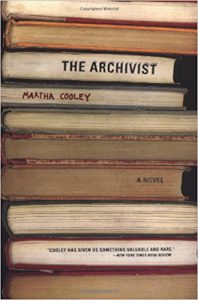 Matthias Lane is a library archivist, a widower nearing retirement at an American university, who guards the rules of the library’s archives religiously. Case in point—the archives has among its’ collections the letters written by T.S. Eliot to Emily Hale, a close personal friend. Graduate student Roberta Spire wants access to those letters, but the instructions left when the letters were donated do not allow public viewing until the year 2020. Roberta believes that the letters will give insight into why Eliot enjoyed female companionship, but was so emotionally detached from his wife, as well as to why Eliot became religious. At first, Matthias sees Roberta as only another grad student doing research. But as Roberta persists in wanting to read Eliot’s letters, Matthias is intrigued by her persistence, and by her knowledge of Eliot’s life and poetry that matches his own. As Matthias gets better acquainted with Roberta, he begins to realize that his own life and marriage are similar to Eliot’s, which Matthias has not previously examined in depth. As a result, his dilemma over Eliot’s letters ends in a completely unexpected solution.
Matthias Lane is a library archivist, a widower nearing retirement at an American university, who guards the rules of the library’s archives religiously. Case in point—the archives has among its’ collections the letters written by T.S. Eliot to Emily Hale, a close personal friend. Graduate student Roberta Spire wants access to those letters, but the instructions left when the letters were donated do not allow public viewing until the year 2020. Roberta believes that the letters will give insight into why Eliot enjoyed female companionship, but was so emotionally detached from his wife, as well as to why Eliot became religious. At first, Matthias sees Roberta as only another grad student doing research. But as Roberta persists in wanting to read Eliot’s letters, Matthias is intrigued by her persistence, and by her knowledge of Eliot’s life and poetry that matches his own. As Matthias gets better acquainted with Roberta, he begins to realize that his own life and marriage are similar to Eliot’s, which Matthias has not previously examined in depth. As a result, his dilemma over Eliot’s letters ends in a completely unexpected solution.
This book appealed to me on two levels: it was a story involving a library archives, and a story based in historical fact. The letters of T.S. Eliot to Emily Hale are real, and are kept in the Firestone Library, at Princeton University. The letters are not to be shown to the public until January 1, 2020.
The Archivist, by Martha Cooley, was written 20 years ago, it was is still a great read, and I highly recommend it.
Friday Reads: The Comedians: Drunks, Thieves, Scoundrels and the History of American Comedy by Kliph Nesteroff
I’ve had bad book luck lately. Even titles that have won fancy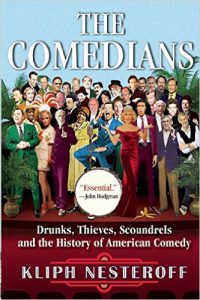 awards have left me feeling pretty unsatisfied. But The Comedians broke my streak—this is a fantastic book, strong enough to be considered the definitive work on the subject. Nesteroff starts off with comedy’s beginnings in Vaudeville and progresses through the radio era, comedy clubs and cable specials, & sketch comedy and variety shows. The title is not a rib—this is a serious, expansive history of comedy as an art form and business—and the treatment of the material might disappoint people who just want a laugh-a-minute romp. But they’ll be missing out if they skip this book.
awards have left me feeling pretty unsatisfied. But The Comedians broke my streak—this is a fantastic book, strong enough to be considered the definitive work on the subject. Nesteroff starts off with comedy’s beginnings in Vaudeville and progresses through the radio era, comedy clubs and cable specials, & sketch comedy and variety shows. The title is not a rib—this is a serious, expansive history of comedy as an art form and business—and the treatment of the material might disappoint people who just want a laugh-a-minute romp. But they’ll be missing out if they skip this book.
The title is also not kidding about the “drunks, thieves, scoundrels” part. Early American comedy had strong links to seedy elements and there are numerous examples of that here—insult comics getting threatened by the Mafiosi sitting in the audience, people dying when cheap comedy clubs collapsed. Beyond its chronicles of actual violence, The Comedians also devotes a fair bit of time to the “crying clown” idea and prevalence of addiction in comedy. Some famous names come across as very broken people and a few emerge as basically forever-unhappy monsters. Some of your favorites might seem a little tarnished after you read it and The Comedians occasionally gets gossipy in a Hollywood Babylon kind of way. But, most of the time, it takes the high road and tells the story of the art form in a fun and engaging fashion. It does for comedy what David J. Skal’s epic The Monster Show did for the history of horror.
One of the most important things about the book is its championing of obscure comedians. Everybody knows the Marx Brothers and Joan Rivers, but it was great to learn about people like Eddie Cantor and Fred Allen, especially at a time when radio-era comedy is instantly accessible through sources like the Internet Archive. If a comedian is/was important, they’re almost certainly here. As I neared the end of the book, I was getting nervous that Andy Kaufman hadn’t been mentioned yet, but The Comedians came through for me. Because of the book’s massive scope, nobody gets tons of spotlight time, but you’ll finish this with a solid understanding of pretty much everything you’d ever want to know about American comedy.
Nesteroff, K. (2015). The Comedians Drunks, Thieves, Scoundrels, and the History of American Comedy. Pgw.
Friday Reads: The Fire Next Time, by James Baldwin
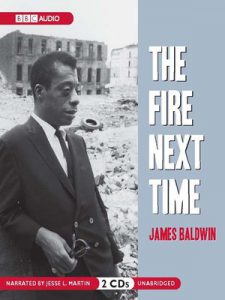 After watching I Am Not Your Negro, the Oscar-nominated documentary based on an unfinished James Baldwin manuscript, I finally tracked down and read Baldwin’s much-referenced 1963 book, The Fire Next Time. This book contains two essays: “My Dungeon Shook—Letter to my Nephew on the One Hundredth Anniversary of Emancipation,” and “Down At The Cross—Letter from a Region of My Mind.”
After watching I Am Not Your Negro, the Oscar-nominated documentary based on an unfinished James Baldwin manuscript, I finally tracked down and read Baldwin’s much-referenced 1963 book, The Fire Next Time. This book contains two essays: “My Dungeon Shook—Letter to my Nephew on the One Hundredth Anniversary of Emancipation,” and “Down At The Cross—Letter from a Region of My Mind.”
In the first essay, Baldwin endeavors to impart to his 15-year-old nephew the wisdom and advice he’ll need to survive growing up as a black man in America. Despite being “born into a society which spelled out with brutal clarity and in as many ways as possible that you were a worthless human being,” Baldwin urges his nephew to trust his own experience, to resist internalizing messages of inferiority, and to continue to love. And in a more sophisticated exhortation than our contemporary “Make America Great Again” slogan, Baldwin writes: “Great men have done great things here and will again and we can make America what America must become.” This essay actually served as inspiration for Ta-Nehisi Coates’s 2015 book, Between the World and Me, which took the form of a letter to his own teenage son. The tragedy, of course, is that such letters are still necessary.
The second essay, “Down At The Cross—Letter from a Region of My Mind,” is quite a bit longer than the first. In it Baldwin recounts his experiences with the Christian church during his youth and the Nation of Islam as an adult, seeing in neither a solution to the racial problems that infect America. Throughout, he offers an unsparing analysis of the problematic role race has played in the development of American civilization, “which compromises, when it does not corrupt, all the American efforts to build a better world…”
This essay is a demoralizing read because of how applicable Baldwin’s criticisms remain. “People are not, for example,” Baldwin writes, “terribly anxious to be equal (equal, after all to what and to whom?) but they love the idea of being superior.” And also: “It is rare indeed that people give. Most people guard and keep; they suppose that it is they themselves and what they identify with themselves that they are guarding and keeping, whereas what they are actually guarding and keeping is their system of reality and what they assume themselves to be.”
Baldwin’s writing is not without hope, but his is a bleak optimism–more philosophical choice than true faith. This perspective is powerfully captured in a 1963 television interview (“The Negro and The American Promise,” WGBH), in his response to a question about whether he is a pessimist or optimist: “I can’t be a pessimist because I’m alive. To be a pessimist means that you have agreed that human life is an academic matter, so I’m forced to be an optimist. I’m forced to believe that we can survive whatever we must survive.” As he did in his letter to his nephew, in this essay he holds out love as the only way forward. But he makes clear that when he uses the word “love” he is referring to “a state of being, or a state of grace—not in the infantile American sense of being made happy but in the tough and universal sense of quest and daring and growth.”
Baldwin, James. The Fire Next Time. Ashland, Oregon: Blackstone Audio, 2008.
Friday Reads: The Great Mistake, by Mary Roberts Rinehart
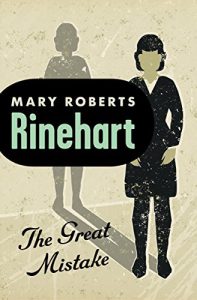
The Great Mistake
In the mystery series “Death on Demand”, by Carolyn Hart, several women authors of the golden age are mentioned: Agatha Christy, Ngaio Marsh, Dorothy Sayers, Margery Allingham, and our own Mignon Eberhart. But one author I’d never heard of was Mary Roberts Rinehart. So when an e-book edition of The Great Mistake, one of her titles, popped up on BookBub, I bought it.
And I wasn’t disappointed. Set in a small town called Beverly set near Town, it is large enough to have a hunt club, and Society. After some digging online, I discovered the book was published in 1940, but nothing of World War II, politics, or international tensions shadow this book. I was a third of the way through before I could clearly say, “well, we don’t do that anymore”. The characters are from all sections of society, and for the most part are treated very fairly. If anyone comes off looking churlish, it’s the homicide officer from Town, and of course, it’s part of his job, as the outsider. The main characters are all definitely rounded. There is a love story, but surprisingly enough for the time, it is low-key. The foundation of the mystery is built skillfully, adding to the suspense.
The main character, Pat, comes into “the big house on the Hill,” to be a secretary to the widow of the billionaire who built the house for her and her son. Maude, the widow, is a vibrant, attractive personality, and busy hostess in need of help for her parties and social responsibilities. And Pat is fond of her. Tony is the son, who runs the family firm in Town and at first they merely get on each others nerves. Pat never sets out to be a detective of any type, unlike many other main characters of mystery fiction, particularly cozy mysteries. She is meant to be more of a way for us to be a part of the mystery. The events of the story tell on her, as her employer falls mysteriously ill. Then a dear friend’s runaway & divorced husbanded returns for nursing for a terminal illness, (he says.) A mysterious figure is seen peering in a window, and a night watchman is mugged, stripped of trousers (& keys). The entire mystery is framed by remarks about writing the entire story down for everyone, which serves as a fine way to find out how the dangling threads are tied up. It all flows so well, the language enhances the story and never shouts out the time period. A smoother read in that regard than Christie.
Mary Roberts Rinehart, (August 12, 1876-September 22, 1958) was often called the American Agatha Christie. While she is considered the source of the phrase “the butler did it”, from her novel The Door, 1930, the writer never used that phrase in the book. She is also considered to have invented the “Had-I-But-Known” school of mystery writing in her book The Circular Staircase, 1908. She wrote novels, plays, short stories, travelogues, and was a war correspondent. With her sons she founded the publishing house Farrer & Rinehart, and served as director.
More about Mary Roberts Rinehart and lists of her titles from Wikipedia
Friday Reads: Hillbilly Elegy by J.D. Vance
Far away from bike paths that lead to grocery stores that sell kale is Appalachia. It runs through West Virginia and eastern Kentucky, and some parts of Tennessee and the Carolinas, too. It’s mostly dirt-poor and the things for which it’s known—family feuds, coal mining, moonshine—seem to have little connection with modern life in other parts of America. These days, unless Appalachia is being mocked, it’s generally ignored.
Which is why it’s strange that this memoir has struck such a chord. It has been sitting atop the bestseller lists for months and has received coverage in tons of major media outlets. On its face, the story doesn’t seem to be widely relatable. J.D. Vance’s family originated in the hills and hollers of rural eastern Kentucky. He experienced the traumas that often shadow poor communities: drug abuse, outbursts of violence, and other self-defeating behaviors. But, unlike many, Vance escaped and prospered, eventually attending Yale and joining a San Francisco investment firm. Hillbilly Elegy reads like a gateway into the world of “Bloody Breathitt” County, Kentucky. But it also details the process through which Vance found a better life outside the region. The book is interesting as a depiction of an overlooked place, but it also works as a coming-of-age story.
And it’s getting talked up as a kind of Rosetta Stone that explains election results. The Times calls it “a civilized reference guide for an uncivilized election”. I’m not sure that I totally buy that. Appalachia is a pretty unique place. I don’t know how much you can port over its attributes to cities in the Rust Belt and so on. It’s worthwhile to examine a culture and community for its own sake, but if you’re just looking for national power brokers or explanations for electoral trends, Hazard, Kentucky might not be where you want to start.
Even if Hillbilly Elegy can’t provide pat answers to complex political questions, it’s still a good book that’s very affecting and ultimately inspiring. If you would like to learn more about the region, I’d recommend this book, as well as two documentaries. American Hollow focuses on the same area and lifestyle described in Hillbilly Elegy and Oxyana viciously captures the prevalence of drug addiction in Appalachian communities. It’s great that attention is being drawn to a part of our country that’s often been forgotten—hopefully, it will lead to some real change for the region.
Vance, J. D. (2016). Hillbilly elegy: a memoir of a family and culture in crisis. New York: Harper.
Friday Reads: “Born to Run” by Bruce Springsteen
 When a fan approaches the autobiography of a rock star, the bar is set pretty high. And with Bruce Springsteen’s Born to Run, I thought the high bar was reached and sailed over. I didn’t really know what to expect. I always thought the real Bruce was probably a combination of the characters that shine out from his songs, but of course that’s an oversimplification. The character that comes off the pages of this book does have a lot in common with the characters that are seen in the narratives in his music. But Bruce Springsteen is a multi-layered guy and he is complicated. He is the real deal, for sure. He came up on the streets of New Jersey and early Greenwich Village, and his reflections on those early days (and what came later) take the reader into a slice of America that goes well beyond voyeuristic star gazing. When he says, “The grinding hypnotic power of this ruined place and these people would never leave me,” (in reference to his hometown) you can bet it won’t be leaving the reader soon either.
When a fan approaches the autobiography of a rock star, the bar is set pretty high. And with Bruce Springsteen’s Born to Run, I thought the high bar was reached and sailed over. I didn’t really know what to expect. I always thought the real Bruce was probably a combination of the characters that shine out from his songs, but of course that’s an oversimplification. The character that comes off the pages of this book does have a lot in common with the characters that are seen in the narratives in his music. But Bruce Springsteen is a multi-layered guy and he is complicated. He is the real deal, for sure. He came up on the streets of New Jersey and early Greenwich Village, and his reflections on those early days (and what came later) take the reader into a slice of America that goes well beyond voyeuristic star gazing. When he says, “The grinding hypnotic power of this ruined place and these people would never leave me,” (in reference to his hometown) you can bet it won’t be leaving the reader soon either.
This book was written over seven years in several drafts and redrafts. Springsteen likens the process of writing the book to song-writing. That comparison isn’t lost on this reader. He writes the book in the same cool, clean voice that brought us “In the day we sweat it out on the streets of a runaway American dream / At night we ride through the mansions of glory in suicide machines.” The pages of this book ring just as true as the lyrics to the Springsteen songs that this fan listened to over and over on a front porch in Nebraska on hot summer nights.
I was also struck by the fact that for an autobiography there is a ton of rich, juicy detail about the others on this journey with him. His family is finely drawn and very interesting. And there is lots of intel on the cast of characters that made up his bands through the years. For me, Stevie Van Zandt (think stellar musician and one of the central members of the Sopranos cast) and the late sax great Clarence Clemons are tremendously compelling characters that really help paint the picture of Springsteen. Knowing more about his close relationships really rounds out the reader’s understanding of who “The Boss” really is. You’ll love this book if you ever sang along to “We gotta get out while we’re young / `Cause tramps like us, baby we were born to run.” Even if you didn’t, this autobiography is worth your time.
Review by Mary Jo Ryan
#FridayReads
Born to Run by Bruce Springsteen
Simon & Schuster, 2016
Friday Reads: The Tenth Man: A Novel, by Graham Greene
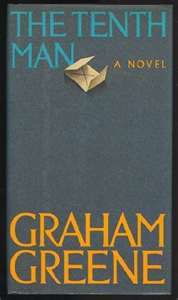 One advantage I have had over the years with the Nebraska Library Commission is that of being able to visit libraries all over the state – primarily public libraries, but a few other types as well. Often the public libraries have ongoing book sales of both weeded and donated books, usually on a shelf or sale table with suggested prices for paperback, hardbacks, or magazines, sometimes with statements such as, “Donation accepted.” On one fairly recent swing through the western part of the state to do a strategic planning workshop, I paused briefly at a book sale and purchased The Tenth Man, a short novel by Graham Greene.
One advantage I have had over the years with the Nebraska Library Commission is that of being able to visit libraries all over the state – primarily public libraries, but a few other types as well. Often the public libraries have ongoing book sales of both weeded and donated books, usually on a shelf or sale table with suggested prices for paperback, hardbacks, or magazines, sometimes with statements such as, “Donation accepted.” On one fairly recent swing through the western part of the state to do a strategic planning workshop, I paused briefly at a book sale and purchased The Tenth Man, a short novel by Graham Greene.
Of course it was the author’s name that intrigued me, and the recollection of a film based on one of his novels, The Third Man, that caught my attention since I had never heard of a book by him entitled, The Tenth Man (and since the title so closely resembled the more well-known one). A summary of the novel itself is fairly easy and straightforward. The setting is a German prison camp during the World War II era in which political prisoners are forced to draw lots to determine which of every ten men will be executed – a “decimation” order that is apparently similar to what happened in Spain during its Fascist years.
This short novel (about 30,000 words) moves quickly, with the action and dialog quite spare, yet effective. The primary story concerns that of a wealthy attorney who is among the prisoners and who draws one of the marked papers indicating he will be executed (following orders of the prison masters who allow the prisoners themselves to determine who will be sacrificed). The crux of the story is that the attorney desperately offers all his wealth, his home and his land to any other prisoner who will take his place and be executed. He has a taker, and, being an attorney, knows how to put the proper papers together to bring this about to make the destitute man temporarily rich, at least until his death, with his family provided for.
The substitute is executed, and later, after the war has ended, the attorney returns to his former home, passing himself off with a different name and identify. He is, of course, penniless, but he is befriended by the executed prisoner’s sister and her crotchety mother, and is given caretaker-type work there since the family is in a somewhat precarious position. Yet another imposter – as it turns out, an unemployed actor — shows up, claiming to be the surviving attorney and ingratiating himself to the sister.
The story is fairly sparse, as I mentioned, but very well-written. What was most interesting to me, however, was not so much the novel itself, but more how it came about. According to the author, he wrote this novella sometime in 1944, based on an idea he had had in 1937. In 1983 Greene was contacted by an agent in America, telling him that The Tenth Man was being offered by the movie giant MGM for sale to an American publisher. Graham’s memory of the novel was so vague, that he thought he remembered writing a two-page summary of the story idea, not the 30,000 words it turned out to be. Apparently Greene had sold the rights to the novella to MGM under what he deemed a “slave contract” to ensure security for his family’s income.
Graham Greene himself worked for MI6, England’s spy agency. His travels for the agency took him all over the world, and he used many of the settings from his travels in his novels. The Tenth Man is not considered among Greene’s greatest work, but this author’s prolific career of writing novels, short stories, travel books, essays, plays and screen plays bears looking into. The Tenth Man is my introduction to an author I always meant to, but never had read, before this.
Posted in Books & Reading, General, Information Resources, Uncategorized
Tagged Friday Reads
Leave a comment



